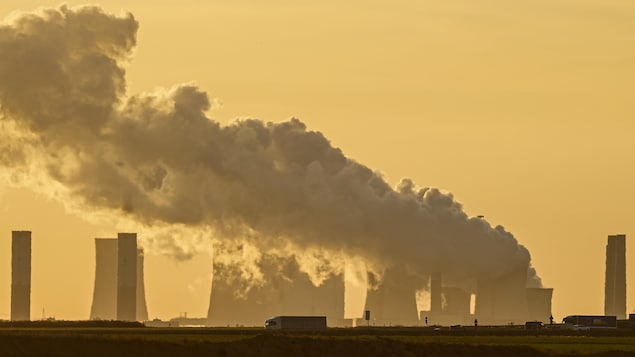
Despite new commitments from more than 120 countries registered as of September 30, the gap with what would be necessary to comply with the Paris Agreement aims to limit global warming to below +2°C, if possible to +1.5°C compared to the era pre-industrial, It still matters
The report released on Tuesday concludes by the United Nations Environment Program (UNEP).
So the new promises Reduce emissions forecasts for 2030 by 7.5%, while[une baisse de] 30% will be needed for +2°C and 55% for 1.5°C
.
Obviously this reduction It has to be four times larger to be compatible with +2°C and about eight times to be compatible with +1.5°C
, explains to AFP Anne Ohloff, one of the authors of the report.
There was progress […], but we are very far from where we should be.
the first Nationally Determined Contributions (NDCs)
Among the 200 or so signatories to the Paris Agreement were driving the planet toward a warming of +3 or 4 degrees Celsius.
With new Nationally Determined Contributions made by 143 countries and yet unofficial promises of savings as big as China for 2030, the world is now heading towards a warming of at least +2.7°C.
In addition to the Nationally Determined Contributions, which detail short-term goals, 49 countries representing 57% of global emissions have also formally committed to carbon neutrality by mid-century. [une majorité pour 2050, quelques-uns pour 2060 ou 2045].
These commitments will make it possible to plan an additional half-degree and thus reach +2.2 degrees Celsius, the report notes.
Warnings
But the researchers warned of the risks of exceeding these expectations significantly.
First, they assume that obligations will be fulfilled, while a number of previous obligations have not been fulfilled. Therefore, as a group, the G20 countries are not on track to meet the previous NDCs. As for carbon neutrality strategies, they are waves
.
There are other worrying signs. After the 5.4% drop in emissions in 2020 due to the COVID-19 pandemic, a significant rebound should be noted in 2021 and countries did not take advantage of stimulus plans to accelerate the green transition, with only 17 to 19% of these investments likely to reduce emissions, the report says. .
In addition, scientists’ predictions are based on probabilities.
The report estimates that there is a 66% chance of not exceeding +2.2°C. But in this same scenario, there More than 15% chance that warming will exceed +2.5°C by the end of the century and just under 5% that it will exceed +3°C
.
It’s scary, it also emphasizes the need to get as low as possible.
Especially since every part of the warming counts, and climate catastrophes multiply, from heat waves to floods, already destroying the planet by about +1.1 ° C since the pre-industrial era.
For a chance to limit global warming to +1.5°C, we have eight years to cut greenhouse gas emissions by roughly half: eight years to develop plans, implement policies, and eventually achieve those reductions. Time is seriously running out
The head of the United Nations Environment Program, Inger Andersen, said in a statement.
fossil energies
Eight years to reduce annual emissions by 28 gigatons [mesurées en équivalent CO2] By 2030, when current commitments will cut only about four gigatonnes of carbon dioxide equivalent, according to the report. Carbon dioxide emissions alone are expected to reach 33 gigatons in 2021.
One lever of action to reduce emissions is to eliminate fossil fuels, which are particularly polluting. But another report by the United Nations Environment Program showed last week that global forecasts for coal, oil and gas production were twice as high as those consistent with limiting warming to +1.5 degrees Celsius.
The world must wake up to the looming danger that threatens us as a species
Inger Anderson argued.

